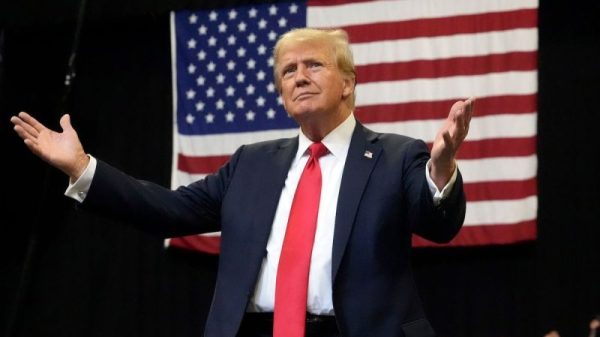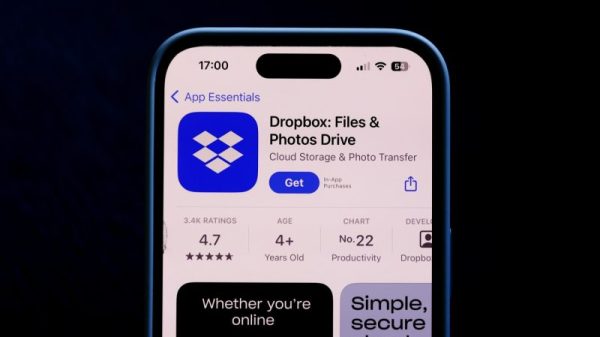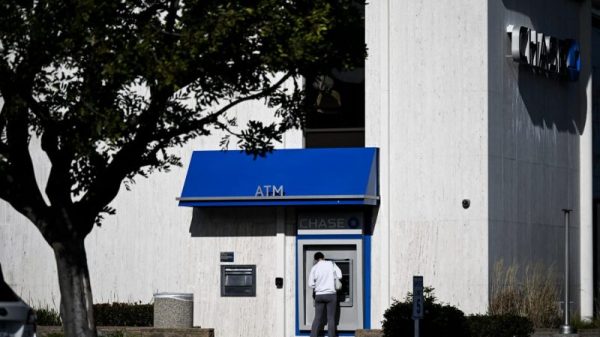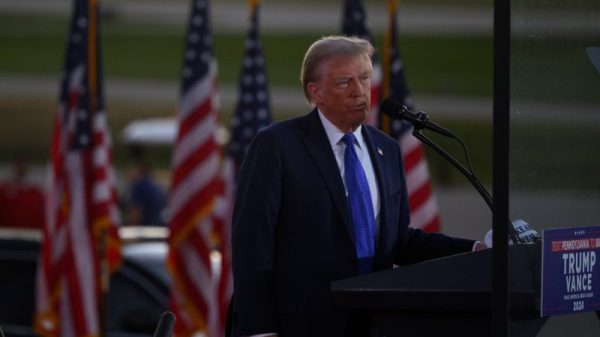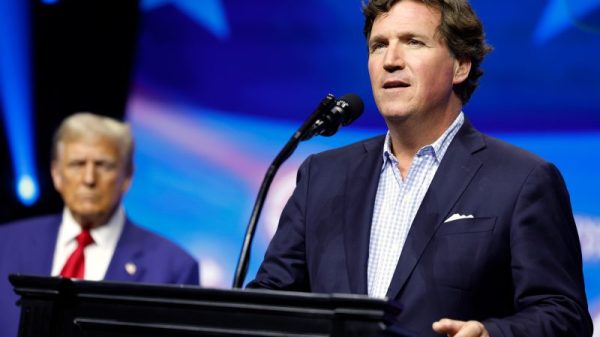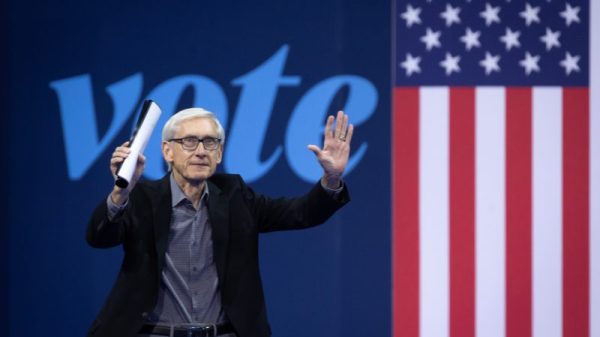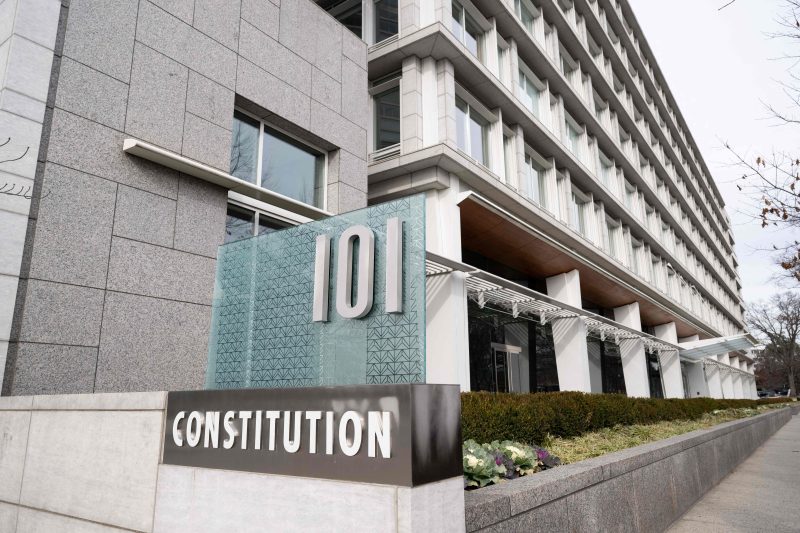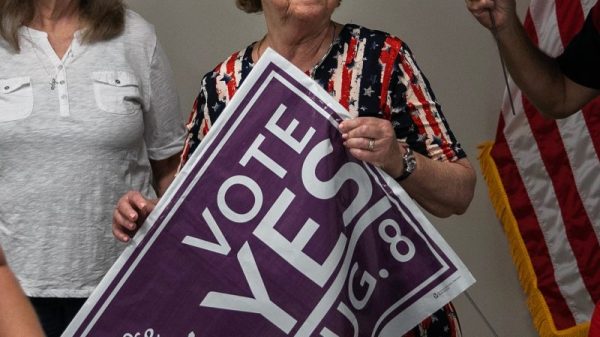This article was originally published in 2023 and has been updated with new developments.
Special counsel Robert K. Hur, a former U.S. attorney in Maryland, will soon release a report critical of President Biden and his aides for mishandling classified documents in Biden’s private home and former office, but prosecutors do not plan to pursue criminal charges in the case, The Washington Post reported Tuesday afternoon.
The announcement that classified documents were found at Biden’s office at the Penn Biden Center for Diplomacy and Global Engagement — and then more material at his Wilmington, Del., residence — raised instant comparisons with the Justice Department’s investigation of former president Donald Trump’s retaining of hundreds of classified documents at his Mar-a-Lago home in Florida.
On Jan. 12, 2023, Attorney General Merrick Garland named Hur as special counsel, after U.S. Attorney John R. Lausch Jr. of Chicago conducted an initial review. The first batch was discovered in late 2022, a White House statement said, shortly before Garland named a special counsel to oversee the criminal investigation of Trump’s actions.
Here’s a brief explainer to help readers evaluate the significance of the discovery. This article will be updated further as more information becomes available.
A White House statement first said that “a small number of documents with classified markings” — said to be about 10 — were discovered on Nov. 2, 2022, by the president’s personal attorneys while vacating office space used by Biden from mid-2017, shortly after his vice presidency ended, to early 2020. They were found in files in a locked closet. The statement said the White House Counsel’s Office notified the National Archives that same day. The Archives took possession of the documents the following morning.
Then Biden’s lawyers conducted a search of Biden’s Delaware residences in Wilmington and Rehoboth Beach. The White House said on Jan. 12, 2023, that a “small number” of additional documents with classified markings were found in the garage of the Wilmington residence; one page was found “among stored materials in an adjacent room.” On Jan. 14, 2023, the White House said five more classified pages were found at Biden’s Wilmington home.
No documents were found in Rehoboth Beach. All were turned over to the Justice Department, the White House said. Garland said the documents were found in the garage on Dec. 20, 2022, and the additional page was discovered on Jan. 12, 2023.
On Jan. 21, 2023, the FBI conducted a 13-hour search of Biden’s Wilmington home and found six additional documents with classified markings. A later search of his vacation home found no additional documents.
The documents had clearly visible stamps or cover material showing that they are considered sensitive. Anyone looking at a document would immediately know it must be handled carefully. In general, classified information needs to be housed in what is known as a sensitive compartmented information facility (SCIF), which has appropriate controls to ensure security. A locked closet in an office building — or a locked garage — would not qualify as a SCIF.
As secretary of state, Hillary Clinton used a private email server, and emails, too, can have classified markings, but despite the controversy over her handling of the materials, it was ultimately determined that none of her emails had been marked classified.
Yes. There are big differences in classification, as outlined in an executive order signed by President Barack Obama in 2009. There is also a well-acknowledged problem of over-classification in the U.S. government. In 2010, Congress even passed a law, the Reducing Over-Classification Act, but did not offer a definition of over-classification.
The lowest level is “confidential” — information that if disclosed could be expected to cause “damage to the national security.”
The next level is “secret,” which could cause “serious damage” to national security. The Code of Federal Regulations, which says the designation should be used sparingly, offers examples: “disruption of foreign relations significantly affecting the national security; significant impairment of a program or policy directly related to the national security; revelation of significant military plans or intelligence operations; and compromise of significant scientific or technological developments relating to national security.”
The highest level is “top secret,” which would be expected to cause “exceptionally grave damage” to national security. This information is supposed to receive the highest degree of protection. Examples in the federal code include: “disruption of foreign relations vitally affecting the national security; the compromise of vital national defense plans or complex cryptologic and communications intelligence systems; the revelation of sensitive intelligence operations.” In 2017, for instance, intelligence contractor Reality Winner leaked a “top secret” report on Russia hacking to the Intercept, earning a five-year sentence after pleading guilty.
Even rarer are Special Access Program (SAP) materials. Access to these can be restricted to those who “need to know,” and controls are even more stringent than those for “top secret” information; it generally requires multiple clearances to see this highly sensitive material.
We do not yet know. CNN has reported the documents found at the Penn Biden Center included intelligence memos and briefing materials, dated between 2013 and 2016, that covered topics including Ukraine, Iran and Britain. The memos were contained in boxes that also contained unclassified papers that fall under the Presidential Records Act and should have been in possession of the Archives. CNN said the office mostly contained personal Biden family documents, but it was not clear whether the boxes with classified materials contained personal materials.
There’s been no description of the documents found at the Wilmington residence.
It happens all the time, according to Mark S. Zaid, a lawyer who defends people who have committed security violations. People retire or leave a job, they pack up boxes — and then sometimes years later they discover they accidentally stored a classified document in their garage or attic.
What happens next depends on how the person deals with the discovery.
In the vast majority of cases, Zaid said, the matter is handled administratively — security clearance is suspended, for example — especially if the incident was quickly reported, investigators determine no one else saw the documents and the amount of material was not massive. He said “hoarders” — people without authorization who take a lot of classified documents — are the ones who get in trouble.
For instance, former FBI analyst Kendra Kingsbury pleaded guilty in October 2022 to taking home more than 300 files or documents, classified at the secret level, related to al-Qaeda.
Intentional removal of documents is especially serious. During the investigation of 9/11, Sandy Berger, President Bill Clinton’s national security adviser, was discovered to have secretly removed classified “code word” documents from the Archives and destroyed some of them. He also lied about what he had done. In 2005, he agreed to plead guilty to removing classified material without authorization, a misdemeanor.
Former attorney general Alberto Gonzales, who served from 2005 to 2007, in 2008 was found to have mishandled highly classified information on sensitive terrorism programs, such as bringing notes home and then leaving documents in an unsecure safe outside his office. But he was not prosecuted, as there was no evidence the classified evidence had been shared.
That is unclear.
Once the documents were discovered, Archives officials were notified and the documents immediately turned over, according to the White House. Speaking to reporters during a trip to Mexico, Biden said on Jan. 10, 2023, he “was surprised to learn that there were any government records that were taken there to that office.” He said his lawyers had not described the documents to him.
After the discovery of the second tranche of documents, Biden told reporters, “My Corvette’s in a locked garage, okay? So it’s not like it’s sitting out in the street.” He said that “the Department of Justice was immediately notified and the lawyers arranged for the Department of Justice to take possession of the document.”
In the Trump case, the Archives initially contacted the former president in May 2021 about missing documents. Trump resisted returning them. Then, when some boxes were returned two years ago, Archives officials discovered documents clearly marked classified, some at the SAP level. The classified documents were intermingled with printouts of news articles, mementos and other items. That triggered an investigation of possible mishandling of classified information.
The FBI, in seeking a warrant to search Mar-a-Lago for more documents, said the boxes contained 184 documents with classification markings: 67 marked confidential, 92 marked secret and 25 documents marked top secret.
In August 2022, when the FBI searched Mar-a-Lago, agents seized more than 100 additional documents marked classified, from the confidential level to top secret. While most were found in a storage room, some were found in desk drawers in Trump’s office, mixed with post-presidential communications with a religious leader, a book author and a pollster, among others.
Zaid said that if Trump had returned all the missing documents when the Archives first requested them, that would have been the end of the matter. It became a criminal matter “only because Trump and his lawyers delayed at first and then obstructed,” he said.
The investigation into the missing documents has led to 40 federal criminal charges against Trump, including willful retention of national defense secrets and obstruction of justice.
Republicans have suggested an intentional delay — “Classified documents were found at Joe Biden’s think tank before the midterms. Why are we just finding out now?” tweeted Rep. Jim Banks (R-Ind.) — but so far, there is no evidence of that.
The initial stages of a documents investigation by the Justice Department often are not public. In the Trump case, the Archives first requested Trump turn over missing documents in May 2021. The investigation did not become public until the Archives announced nine months later that it had obtained 15 boxes from Trump.
The Biden investigation became public after about two months, when CBS News first reported it.
“This is an ongoing process under review by DOJ, so we are going to be limited in what we can say at this time,” White House spokesman Ian Sams said in response to a question about the timing. “But we are committed to doing this the right way, and we will provide further details when and as appropriate.”
One key question for the special counsel was to understand how classified documents from Biden’s vice-presidential office ended up at Penn Biden and at the president’s home. How were the boxes packed, for example, and who was responsible for arranging the transfer? He would then have sought to learn who might have had access to the boxes at either location. NBC News reported that multiple former Biden aides involved in the document transfer had been interviewed by investigators.
Yes. Under Obama’s executive order, the vice president has original classification authority. Trump has claimed that he declassified the documents he kept. Biden, while vice president, had the right to declassify material if he had classified the material in the first place. But properly declassified materials would be marked as such.
At this stage, the classification status of the documents is somewhat beside the point in the Trump investigation. The Justice Department has publicly cited three criminal statutes that might apply — and none require that the documents be classified to prosecute.
(About our rating scale)
Send us facts to check by filling out this form
Sign up for The Fact Checker weekly newsletter
The Fact Checker is a verified signatory to the International Fact-Checking Network code of principles


